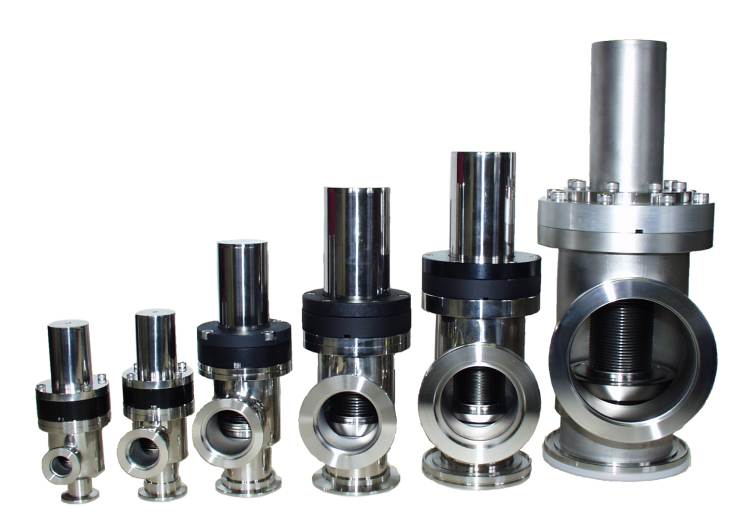Classification and Application of Vacuum Valves
According to the working pressure: low vacuum valves, high vacuum valves and ultra-high vacuum valves.
According to the structural features: butterfly valves, ball valves, diaphragm valves, flapper valves, angle valves, straight through valves, three-way valves.
According to the transmission principle: pneumatic vacuum valves, electric vacuum valves, magnetic vacuum valves.
According to the material: stainless steel vacuum valves, carbon steel vacuum valves, aluminum vacuum valves.
According to the sealing materials: metal seal vacuum valves, non-metal seal vacuum valves.
Application of Vacuum Valves:
Butterfly valves are straight through type valves and their driving mode (manual, pneumatic, electric) is determined by users. Opening angle for manual butterfly valves can be adjusted randomly, as well as intelligent pneumatic butterfly valves and intelligent electric butterfly valves.
Flapper valves are used in the situation where there has a high demand for vacuum degree or pipe size. Leakage rate for this kind of valve is 10-7Pa.L / S, with bi-directional sealing. Users will decide the driving mode (manual, pneumatic, electric). Pneumatic flapper valves and electric flapper valves are all equipped with signal feedback unit.
Compared with straight through diaphragm valves and straight through ball valves, flapper valves are more widely used in angle-way and three places in vacuum pipe lines, and their driving mode are all decided by users. GDC-J-type electromagnetic high vacuum flapper valves, with metal bellows seal, have a wide range of applications among flapper valves, and they can be used as inflation valves. Also, their installation position has no limitation with the output of feedback signal.
Specialized for avoiding oil return of mechanical vacuum pumps, electro-vacuum gas charging valves and electro-vacuum differential pressure valves are all installed at the air inlet of mechanical vacuum pumps, having synchronous opening and closing with pumps. Generally, they can’t be used in other places instead of the vacuum system. And the advantage for electro-vacuum differential pressure valves is that they have small power consumption, saving energy.
